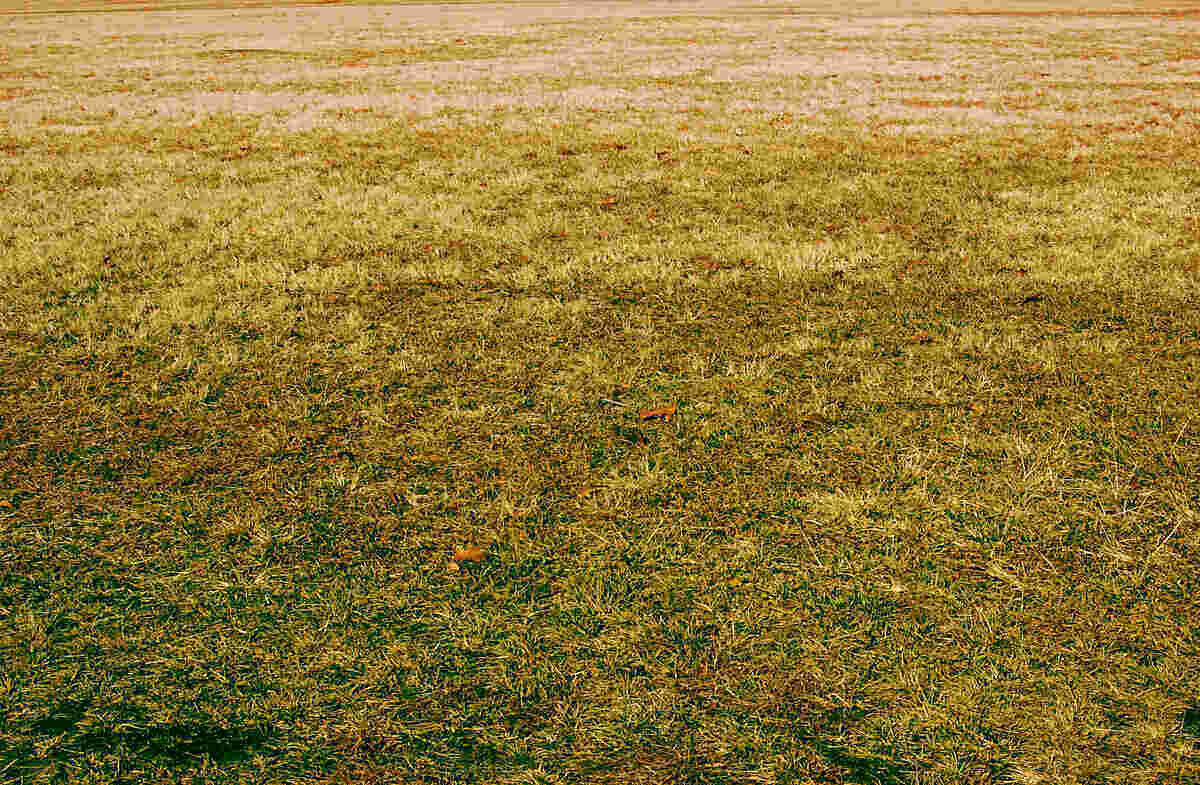
Why is your grass turning yellow? Your dog‘s urine may be to blame. Or, grubs might be feeding on the grass roots. Your grass can turn yellow for several reasons. In this article, we’ll detail the causes and treatments for yellow grass so you can enjoy a green lawn again.
1. Dog Urine
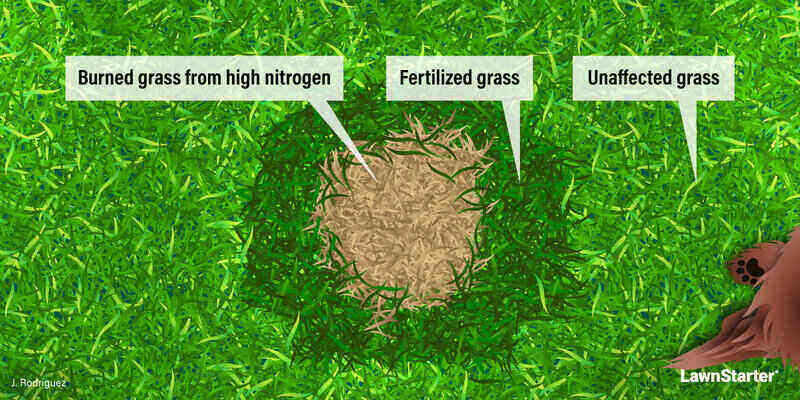
Those yellow spots in your yard might be from your dog’s urine. Dog urine contains urea, a form of nitrogen that results from digesting proteins.
Nitrogen acts as a fertilizer for your lawn, but too much of it can burn your turfgrass. When your pup continues to pee on the same spot over and over, the grass will eventually die from the excess nitrogen.
Signs Dog Urine Is Causing Your Yellow Grass
How can you tell if Fido is causing your yard’s yellow — or brown or dark green — patches? Look at your grass — and watch your pooch in your yard. Common symptoms of dog urine on your lawn:
- Brown or yellow patches of grass appear where your pup usually pees. The grass is dying or already dead.
- Dark green patches of grass appear where your pup usually pees. If your grass doesn’t have enough nitrogen, the nitrogen in the urine will fertilize and darken the grass.
- Dark green grass surrounds patches of brown or yellow grass. As the urine flows away from the concentrated area, less nitrogen hits the surrounding grass, turning it a darker green.
How to Stop (and Repair) Dog Urine Spots
If you suspect dog urine is turning your grass yellow (or other colors), here are a few steps you can take to repair your turf and prevent future stains:
- Change your dog’s diet: Replace processed proteins with fresh proteins (with guidance from your veterinarian). Here’s why: A dog eating processed proteins will have a higher urea and nitrogen content in urine than a dog that eats fresh proteins.
- Pick a spot on your lawn: Use positive reinforcement to train your dog to urinate in an area with mulch or gravel.
- Spray or wash it away: When your dog finishes a bathroom break, thoroughly water the area.
- Raise your mowing height: Higher grass is less sensitive to nitrogen.
- Overseed the affected areas with grass seed to encourage new growth.
2. Grubs and Chinch Bugs
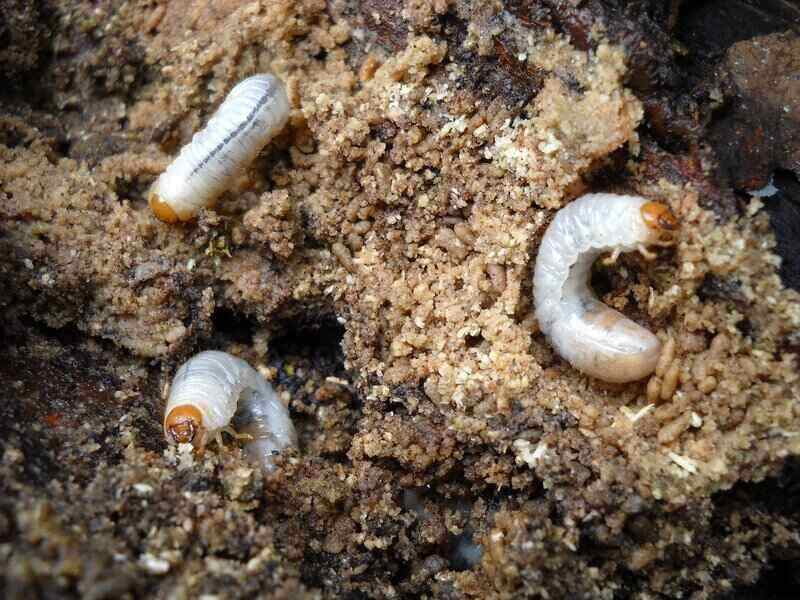
Grubs and chinch bugs are common pests that turn grass yellow. How can you get your green carpet back? Get rid of the grubs and chinch bugs.
Grubs
What are the grubs in my lawn? Grubs are the larval stage of several beetle species, and they snack on grass roots.
The grubs get their start when the adult beetles lay eggs in your turf, usually in spring. After the eggs hatch, the grubs evolve in three stages, with grub damage greatest in late summer, when you will see areas of your lawn thinning and yellowing. Later, irregular brown patches appear in your turf.
Chinch Bugs
What are chinch bugs? Chinch bugs are small insects that damage lawns — especially St. Augustinegrass lawns — by piercing grass stems and crowns with their mouths to suck fluid from the grass. They inject the grass with a toxin that turns it yellow.
The damage caused by chinch bugs looks similar to that caused by drought. The grass will eventually turn from yellow to brown and then die. You’ll notice the damage as brown patches spread across your lawn.
Chinch bugs are active from April through October across most of the U.S. but are a year-round problem in Florida.
If you wish to prevent an infestation of chinch bugs or are looking for ways to eliminate the ones already present in your yard, check out the tips below:
- Take better care of your lawn: Remove thatch, aerate the soil, add fertilizer when needed, and properly water your grass.
- Insecticide: The surest way to get rid of chinch bugs in your yard is to kill them with liquid and granular insecticides.
3. Lawn Diseases
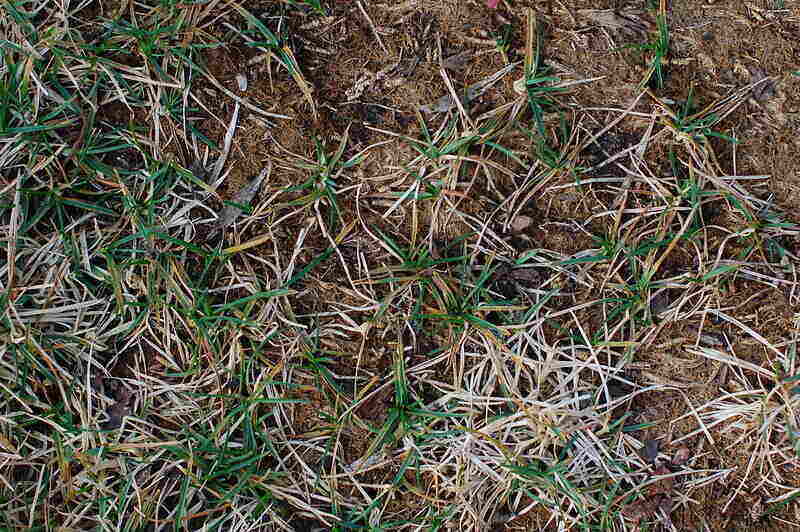
Here’s a list of common lawn diseases with yellowing grass as a symptom:
- Anthracnose
- Leaf spot and melting out
- Powdery mildew
- Rust
How to prevent and treat lawn diseases:
- Improved lawn maintenance: In general, the best way to treat a lawn disease is with improved maintenance. Poor maintenance practices create an attractive environment for lawn fungus.
- Fungicides: Some curative fungicide treatments are available, but not every fungal lawn disease will respond to chemical treatment. Before treating your lawn with a fungicide, identify the lawn disease to ensure you’re using the appropriate control method. In many cases, better lawn maintenance is the best approach.
4. Nitrogen Deficiency
Nitrogen is the chemical that gives your lawn that beautiful, green color. If your grass doesn’t have enough nitrogen, your turf will eventually turn yellow. But the solution is simple: Apply a fertilizer with nitrogen.
How to tell if your yellow grass is caused by a lack of nitrogen: The best way to determine your lawn’s nitrogen levels is to conduct a soil test. At-home soil tests are available, but they won’t provide as detailed information as a laboratory test.
For example, an at-home soil test will typically reveal a nutrient deficiency, but it won’t provide information on how to amend the soil. A laboratory soil test will often provide the soil’s nutritional levels alongside details on applying amendments and fertilizer.
Pro Tip: An iron deficiency, known as iron chlorosis, can also cause your grass to turn yellow. One way to revive your grass is to spray an iron supplement on the affected area, but refer to your soil test results before adding soil amendments.
5. Overfertilization
Overfertilization will burn your turf and turn it yellow. Why? Just as your lawn can have too little nitrogen fertilizer, it can also have too much nitrogen fertilizer.
The easy fix? Improve your fertilization regimen. Maybe you are applying fertilizer too often or the wrong kind for your grass type.
Here’s what to do: Send a soil sample to your local Cooperative Extension for laboratory soil testing. The results will show the appropriate amount of nitrogen, phosphorus, and potassium to apply to your lawn.
Purchase the correct fertilizer, then read the fertilizer application instructions carefully and calibrate your drop spreader or broadcast spreader so that it releases the right amount of fertilizer.
6. Too Much or Too Little Water
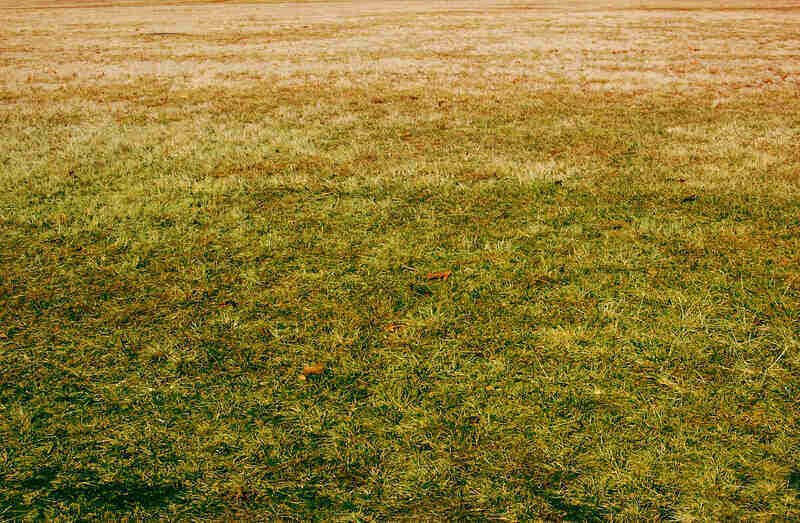
Overwatering (too much water) can lead to root rot while watering too little creates stressful drought conditions, and both can cause your yellow grass.
How to give your grass the right amount of water: Most mature, established lawns require 1 to 1.5 inches of water per week.
If you’re unsure how much water your lawn receives, place a few tin cans within the garden hose or sprinkler’s irrigation range. After watering, calculate the average water depth in all the cans. The result is how much water your lawn has likely received.
What’s next: If your yellow lawn doesn’t bounce back from improved watering, then the grass is likely dead. Reseed the affected areas or replace them with sod.
Pro Tip: It’s better to water your lawn deeply once a week than to water briefly three times a week. Watering less often but for long periods encourages a deep, healthy root system.
7. Soil Compaction
Another cause of yellow grass: soil compaction.
When soil becomes compact, the limited pore space prevents water, oxygen, and nutrients from reaching the grass roots. Your grass may turn yellow as it struggles to breathe and absorb food.
How do you know your soil is compacted? Here are the warning signs:
- Patches of grass start to thin.
- Your lawn has patches of dirt where grass and weeds won’t grow.
- Your lawn has heavy clay soil.
- Puddles form in low areas of the lawn.
- The soil is so hard that piercing it with a shovel or screwdriver is difficult.
The best way to relieve compact soil is with aeration.
An aerator is a garden tool that you (or a pro) push across the lawn to pull up small plugs of soil. The aerator creates tiny holes in the ground that allow water, oxygen, and nutrients to access the grass roots. Visit your local home improvement store for hourly, daily, or weekly rentals.
8. Dormancy
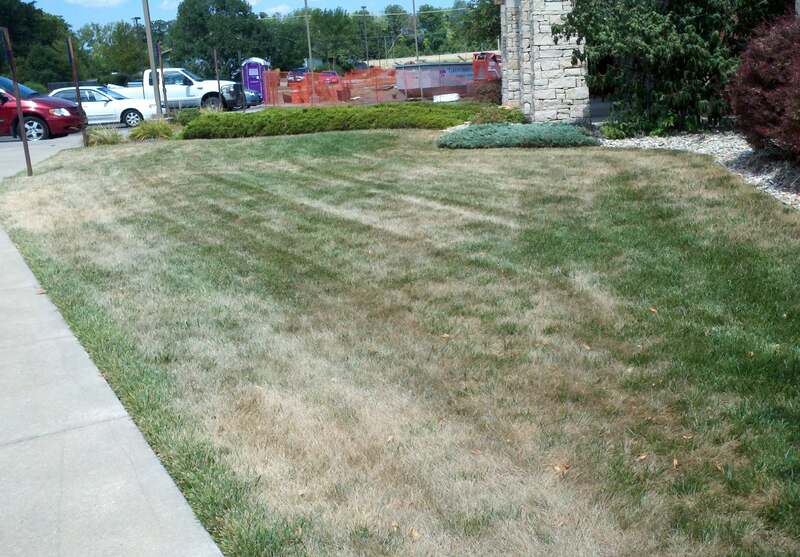
Sometimes yellowish, tannish-brown grass is nothing to worry about. It could just mean your lawn is entering dormancy. When your lawn goes dormant depends on your grass type.
Cool-season grass: If your lawn is a cool-season grass, such as fescue or Kentucky bluegrass, your grass will enter dormancy in the summer and when winter soil temperatures drop below 45 degrees.
Warm-season grass: If your lawn is a warm-season grass, such as Zoysia or Bermudagrass, your lawn will enter winter dormancy when soil temperatures drop below 55 degrees.
There’s nothing you need to do to “treat” dormancy. Dormancy is natural and seasonal — your lawn is taking a nap to ride out the cold temperatures.
9. You’re Cutting the Grass Too Short
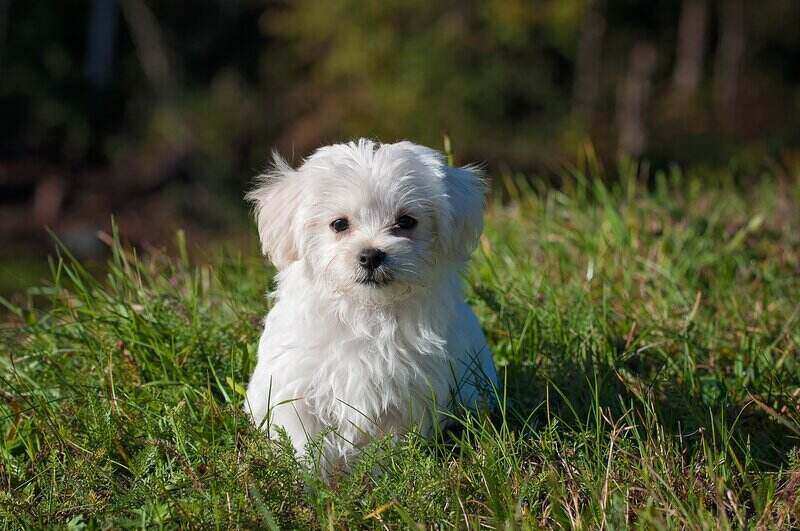
Your yellow grass may be because you are mowing your grass too short.
How low are your mower blades? If you’ve been cutting your grass too short, your lawn may be showing signs of scalping. Scalping is when you cut the grass so low that it’s unable to photosynthesize.
As a result of not being able to photosynthesize, the grass fades to yellow and becomes susceptible to other dangers, such as pests, disease, and weeds.
The simple fix? Raise the mowing height of your lawn mower. For the healthiest cut, mow on the higher end of your grass’s recommended mowing height.
And remember, never cut more than one-third of the grass blade’s height during a single mow. Otherwise, you’ll stress your turf. For example, if your grass is 3 inches tall, don’t remove more than 1 inch.
| Grass Type | Recommended Mowing Height (Inches) |
| Kentucky Bluegrass | 2.5 to 3.5 |
| Tall Fescue | 2 to 3 |
| Fine Fescue | 2 to 3 |
| Perennial Ryegrass | 1.5 to 2.5 |
| Common Bermudagrass | 1.5-2.5 |
| Hybrid Bermudagrass | 0.5-1.5 |
| Zoysiagrass | 1-2 |
| Bahiagrass | 3-4 |
| Centipedegrass | 1-2 |
| Buffalograss | 2-3 |
| St. Augustinegrass | 2.5-3 |
| Carpetgrass | 0.75 to 2 |
10. Dull Mower Blades
If your lawn is still yellow after raising your mower’s mowing height, dull blades might be the problem. Worn mower blades rip and snag the leafy grass, creating an untidy, yellowish appearance in the lawn.
The simple solution: Sharpen your mower blades to achieve a clean, crisp cut.
11. Misuse of Chemicals
Your yellow grass may be your own doing. A contact weed killer, for example, will get rid of the weeds and surrounding grass if you’re not careful. If you spill or misuse chemicals on your yard, it can result in yellow grass.
Whether you’re applying herbicides, fertilizers, pesticides, or fungicides, read the instructions before applying them. The chemicals in these products are potent, and improper use may prove detrimental to your grass, not to mention your health.
The easy solution? If you suspect your yellow grass is due to misapplied chemicals, be more careful when applying anything on your lawn. These mistakes can be costly. Why? You may need to reseed or sod areas of dead or dying grass.
12. Too Much Shade
If the grass under your favorite tree is turning yellow, it’s probably struggling to grow in the shade. Grass needs plenty of sunlight to thrive, and too much shade can threaten its survival.
While it’s possible to grow grass in the shade, it won’t grow as dense and thick as grass growing in the sun. But with a few adjustments to the shady area, you can give your grass a nudge in the right direction.
- Prune trees that are blocking sunlight from reaching the grass.
- Overseed the area with a shade-tolerant grass type.
- Increase the mowing height so that shaded grass grows tall.
- Don’t water too much. Water won’t evaporate as well in shady areas.
13. Autumn Leaves
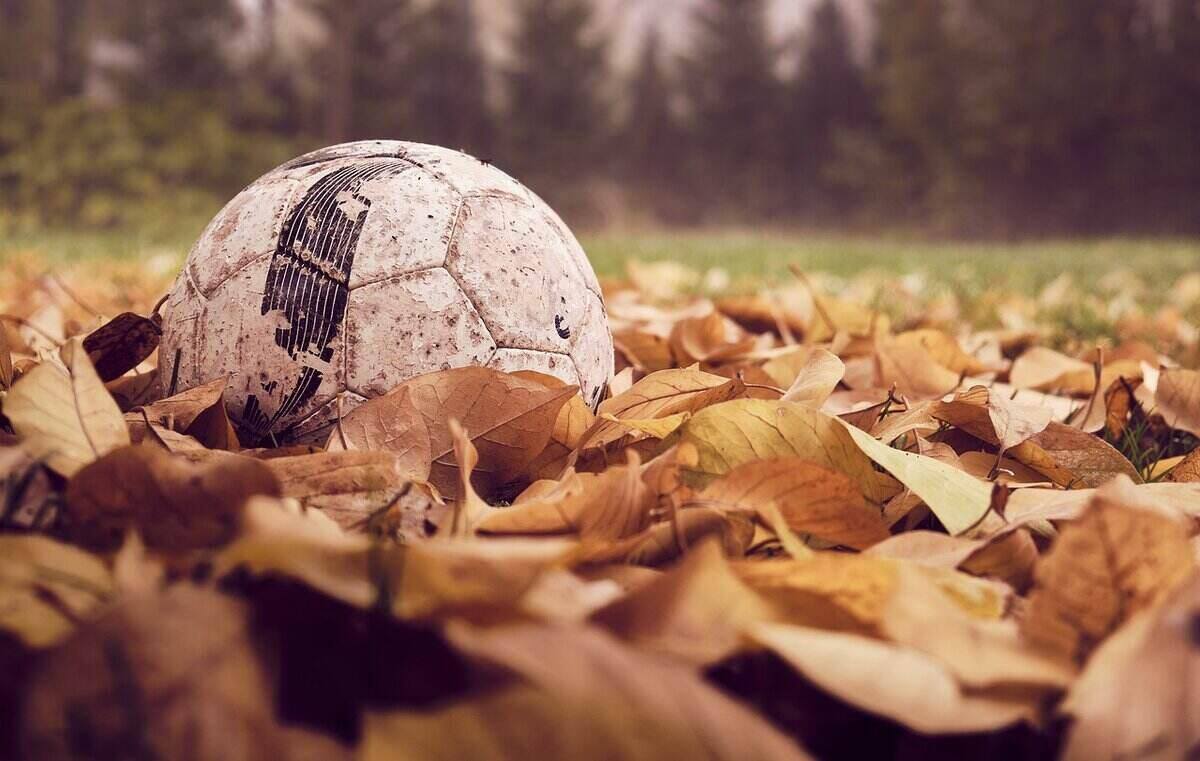
Don’t let those autumn leaves pile up on your lawn — those fall colors could be making your grass yellow.
Here’s why: A thick layer of leaves blocks the sunlight from reaching your lawn and prevents the grass from photosynthesizing. If you wait too long to remove the leaves, your grass will eventually yellow and die.
Leaves (and other plant debris) also create a breeding ground for pests and disease, encouraging further yellowing.
The solution? Rake, blow, or mulch your leaves. Don’t want to deal with the back-straining work? Hire a LawnStarter leaf removal crew to get rid of that blanket of leaves so your grass stays green longer.
14. Thick Thatch
Another possible cause of your yellow grass? Thatch.
What is thatch? Thatch is the layer of dead and living organic matter that accumulates between the soil’s surface and the grass blades. A thin layer of thatch is healthy for the lawn, but a thick thatch layer requires removal.
Once thatch reaches one-half inch thick, it blocks water and fertilizer from the soil and harbors pests and diseases. No wonder your grass is turning yellow — your lawn can’t eat or drink!
How to check for thatch: Grab your shovel or garden hoe and dig up a small clump of soil. Thatch will appear as a tannish, intertwining layer of dead and living organic matter at the soil’s surface. Measure the thatch layer with a ruler to determine its thickness.
How to solve the thatch problem? The most effective way to remove thatch is with a dethatcher.
Our guide will show you when and how to dethatch your lawn. Check your local home improvement store for hourly, daily, or weekly rentals.
FAQ
What is a Top Choice For An Organic Fertilizer?
If you’re looking for an organic fertilizer for yellow grass, Milorganite may be an effective solution. This eco-friendly, slow-release fertilizer has been used since 1926 and works on yellow grass and slow-growing grass. Apart from that, Milorganite also promotes healthy grass growth, which helps choke out weeds preventing their growth.
Note: Milorganite contains phosphorus, and there are restrictions in some states regarding the amount of phosphorus that can be used for lawn fertilization. Hence, it is advisable to check your state and local regulations before using any lawn fertilizer containing phosphorus.
Could Yellow Patch Be Making My Lawn Yellow?
Yes, yellow patch could be making your lawn yellow if you’ve ruled out other causes, such as dog urine, excessive nitrogen applications, poor drainage, and heavy thatch.
This disease usually affects cool-season turfgrasses like bentgrass, bluegrass, and fescues during the fall, winter, and spring. You may notice yellow or white irregular patches or rings that can be up to 3 feet in diameter as symptoms of this disease.
Yellow patch appears during long periods of cool, cloudy, and wet weather. It thrives in temperatures ranging from 50 to 65 degrees Fahrenheit, but it can still infect your lawn if the temperature fluctuates between 45 to 75 F. Since yellow patch occurs during a period when the turf grows slowly, recovery may be slow and take time.
Is Yellow Grass Dead Grass?
Maybe not. Yellow grass doesn’t necessarily mean your grass is dead. So, if you’re still asking yourself, “Why is my grass turning yellow”? it can be an indication of a simple problem, such as your grass might need to be watered, or a more significant issue, such as yellow patch.
When To Hire a Lawn Care Pro
We’ve listed several common causes of yellow grass, but the biggest culprits for homeowners are often inadequate lawn care and a lack of knowledge. Neglecting to properly care for your lawn or being unaware of the right way to do so can make it more susceptible to lawn diseases, pests, overfertilization, and poor irrigation.
Important lawn care tasks include proper mowing, aeration, thatch removal, and soil testing. If you don’t have the time, inclination, or knowledge to take care of your grass, hire a local lawn care pro to do it for you.
LawnStarter participates in the Amazon Services LLC Associates Program, an affiliate advertising program. LawnStarter may earn revenue from products promoted in this article.
Main Photo Credit: Shutterstock